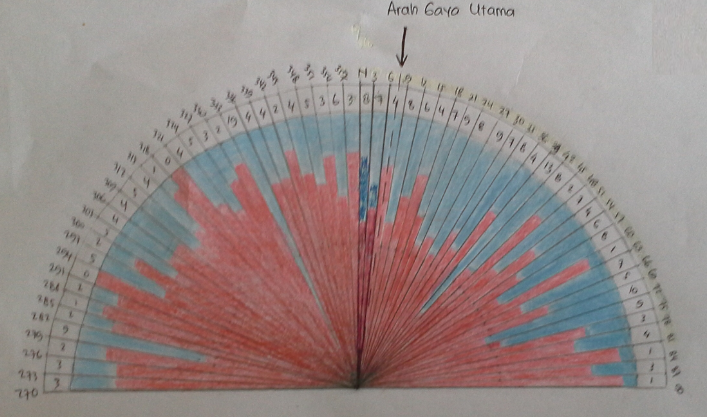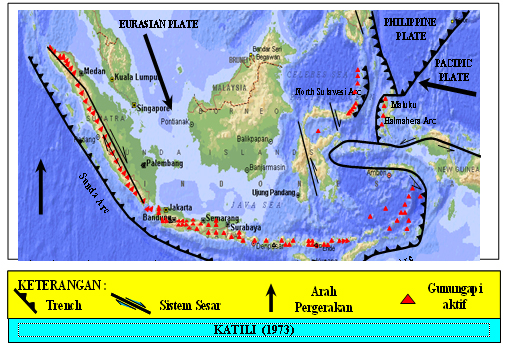How to plot the strike data to the Rosette diagram
| Wiki Write-Off Entry | |
|---|---|

| |
| Student Chapter | University of Indonesia |
| Competition | June 2015 |
Definition
The orientation of a rock bed, fault, fracture, cuestas, igneous dikes, and sills can be described using strike and dip of the rock. Strike is direction of the line formed by the intersection of a fault, bed, or other planar feature and a horizontal plane. Strike indicates the attitude or position of linear structural features such as faults, beds, joints, and folds. Dip is the angle at which a planar feature is inclined to the horizontal plane; it is measured in a vertical plane perpendicular to the strike of the feature.[1]
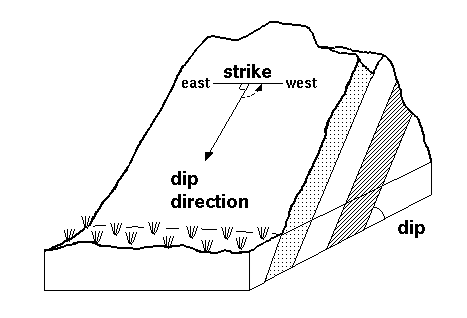
Brunton Compass
Usually the direction of strike and dip can be determined easily with left hand rule. They also can be measured accurately with a Brunton compass. Parts of the Brunton Compass, as explained by Figure 2:
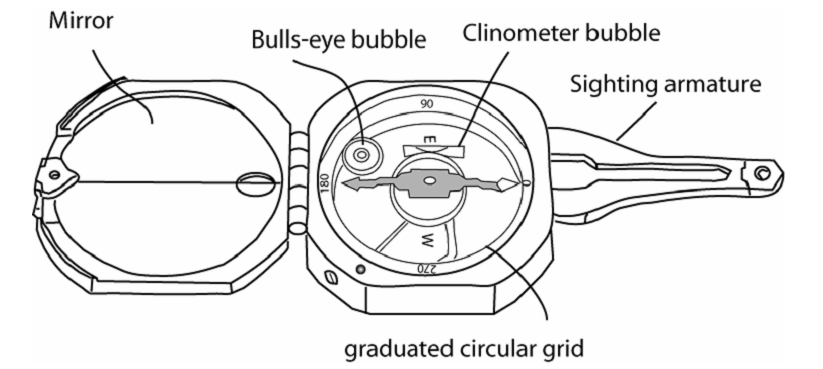
A Brunton compass can be used to:
- Measure strike and dip of planes
- Measure trend and plunge of lines
- Measure vertical angles
- Measure bearings
- Set local declination
In determine the direction of strike and dip, there are four quadrants of a Brunton compass: northeast, northwest, southeast, and southwest. Each of them have value 0-90°. For example in Figure 3, N40° W mean the direction of strike is 40° from north to west. 45° is amount of dip. The direction of dip always perpendicular with direction of strike, so we know the direction of dip is N50° E.
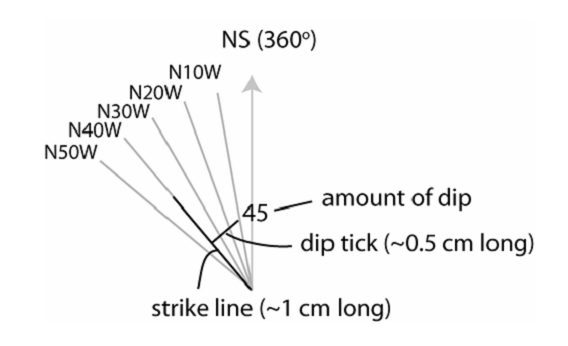
How to Measure Strike
To measure strike of rock we can use Brunton compass:
- Place the bottom edge of the compass flat against the plane of interest. (The direction of sighting armature follows the direction of strike)
- Adjust the compass orientation, making sure the bottom edge is always flat against the plane (Sometimes it is easier to put your field book against the outcrop and then the compass against the book to get a smoother and/or a larger surface), until the air bubble in the "Bull's eye level" is centered.
- Read either end of the compass needle to obtain the value of strike.
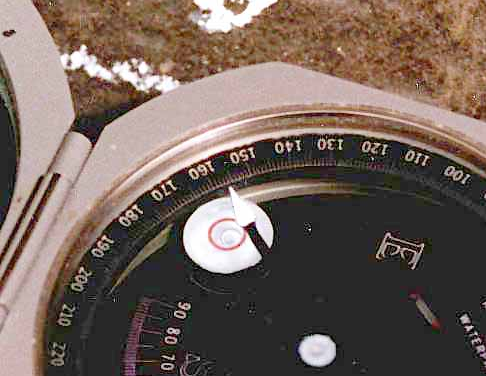
Rosette Diagram
The direction of strike indicate the direction of main force of plat tectonic in there regional. It can be determined with rosette diagram.
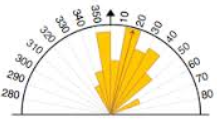
The radial histogram in rosette diagram (the yellow one on Figure 6) show the direction of strike.
Case Study
Indonesia is a country located between three major plates, there are Eurasian Plate, Indo-Australia Plate and Pacific Plate. Eurasian Plate have opposite moving direction with Indo-Australia Plate. Eurasian Plate have moving direction about
Base rock of Java Island is claystone. At Karangrangsambung, Kebumen, Center of Java, there are outcrops of claystone, base rock of Java Island, it is called Karangsambung Formation.
On June 16, 2015 Geophysics of University of Indonesia held Field Trip to Karangsambung, and observed strike of claystone at Kalimandala Karangsambung. The result of the observation is:
From data above we find the dominant angel at NE quadrant is 39 – 42 degree, and at NW quadrant is 333–336°. 39–42° and 333–336° area form angel 60°, to determine the main force we have to find the center of 39–42° and 333–336° area, it will be 7° (see Figure 7). So the main force come from N7°E and N97°E. There are two main force that have opposite direction.
Two main force compress the rock between them, so the rock become stress. The main force that come from N7o E is resultant force between Eurasian Plate and Pacific Plate. Then the main force that come from N97°E is resulted by Indo-Australia (see Figure 8). So, the result of strike measurement in Karangsambung agree with fact.
